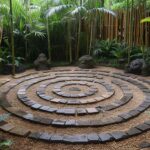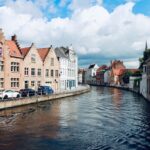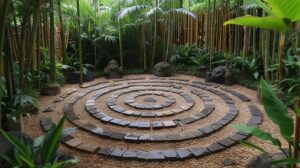
Crisfield, Maryland — known affectionately as the “Seafood Capital of the World” — is often seen as a destination for fresh crab, bay sunsets, and charming coastal festivals. But beyond its busy docks and souvenir-lined boardwalks lies a secret world of water — one that doesn’t appear on tourist maps or guidebooks.
Hidden harbors, narrow creeks, and quiet coves thread their way through this region like forgotten whispers of the Chesapeake. These are places where boats drift without engine noise, where osprey circle overhead, and where the water itself feels like part of a slower, older rhythm. If you’re willing to venture off the known routes, Crisfield reveals a watery labyrinth rich in silence, reflection, and discovery.
The Art of Getting Lost (On Purpose)
Unlike other coastal towns with well-documented waterways and signage, Crisfield’s more intimate aquatic paths often feel like secrets shared only with those who listen. Kayakers, small-boat adventurers, and even paddleboarders who stray from the main marinas discover a different kind of exploration — one not based on GPS but on tides, wind, instinct, and curiosity.
It’s the kind of travel that rewards stillness over speed.
There’s no itinerary, no “must-see” landmark — just endless opportunity to turn left where others go right, to stop and watch where the herons fish, or to float beside reeds humming with life.
These are not grand adventures filled with dramatic vistas. They are small, deeply human moments of connection with a place. They remind us that not all journeys are measured in miles.
Pocomoke Sound’s Forgotten Fingers
To the southwest of Crisfield lies Pocomoke Sound — wide, open, and seemingly featureless on a map. But scattered around its edges are small inlets and tidal creeks that twist into wetlands and marshes rarely touched by development.
Here, water levels shift with the moon. One day you may float easily through an opening between tall grasses; another day, the same route may become impassable. That’s part of the magic — and the lesson. Nature sets the terms, not you.
Fishermen have long known these waters, though few mark them down. Some still follow old stories and landmarks passed down by word of mouth: “the bend after the third cedar,” or “where the eelgrass parts like a trail.”
Little Annemessex’s Quiet Sister Streams
While the Little Annemessex River is a known feature of the area, its lesser offshoots remain largely unexplored by visitors. Tucked behind reeds and narrow entrances, these branches lead to tranquil pockets of water that feel more like hidden rooms than rivers.
Here, time folds inward. You might spend an hour just watching sunlight ripple on the water’s surface or listen to the occasional splash of a fish leaping through lilies. Locals say some of these spots are only visible at certain times of day, depending on light and tide.
It’s these “quiet sister streams” that provide a different kind of luxury — not one of cost, but of calm.
Tangier Sound’s Edge of the Known
To the east, the Tangier Sound stretches toward the horizon, eventually fading into the Virginia line and the storied islands of Tangier and Smith. But before you reach those more publicized destinations, you pass a patchwork of lesser-known routes and half-submerged channels.
Paddling here is part navigation, part poetry. The shoreline seems to fold in and out of itself, offering glimpses of white egrets, derelict crab shacks, and land that shifts subtly each year. Some say the water here “hides the past” — and it does feel like the ghost of the bay still lingers in the breeze.
Though boats with motors might struggle through these skinny waters, small crafts glide effortlessly — respectful, curious, and silent.
No Maps, Just Stories
What makes these routes so magical is not that they’re impossible to find, but that they’ve never been “captured” — not by glossy brochures, satellite images, or tour apps. They persist not as coordinates but as conversations.
Talk to a waterman at the pier, and he might nod toward a direction “where the tide runs kind.” Ask an older local about fishing spots, and you may be told to “follow the osprey when they fly low.”
These aren’t instructions; they’re invitations — an understanding that in Crisfield, some places can only be found by those who first choose to slow down and listen.
Preparation for Wandering
Exploring these hidden water trails requires a different mindset — and a bit of preparation. While GPS apps might still guide your general direction, don’t rely too heavily on them. Signal drops are common, and many paths are unmarked.
Instead, bring a printed nautical chart, water, sunscreen, and a healthy sense of flexibility. Let the weather — and the wildlife — guide your day. Watch the tides. Learn from the wind. Accept that sometimes, turning back is the wisest route forward.
Most importantly, treat the land and water with respect. These ecosystems are fragile, and the solitude they offer is something earned, not claimed.
The Soul of the Water
There’s a kind of soulfulness to the waters around Crisfield that only becomes apparent when you leave behind the main docks and venture where the map fades.
In those spaces, art happens without intention — light refracting through cattails, wind drawing invisible lines across the surface, the quiet echo of wings overhead.
Traveling these hidden routes isn’t about arrival. It’s about being present, completely. It’s about seeing a town not from its roads or restaurants, but from the rhythm of its shoreline.
And once you’ve floated there — in a cove with no name, beneath a sky brushed with salt and sky — you understand something essential:
some places are not meant to be marked. Only remembered.







